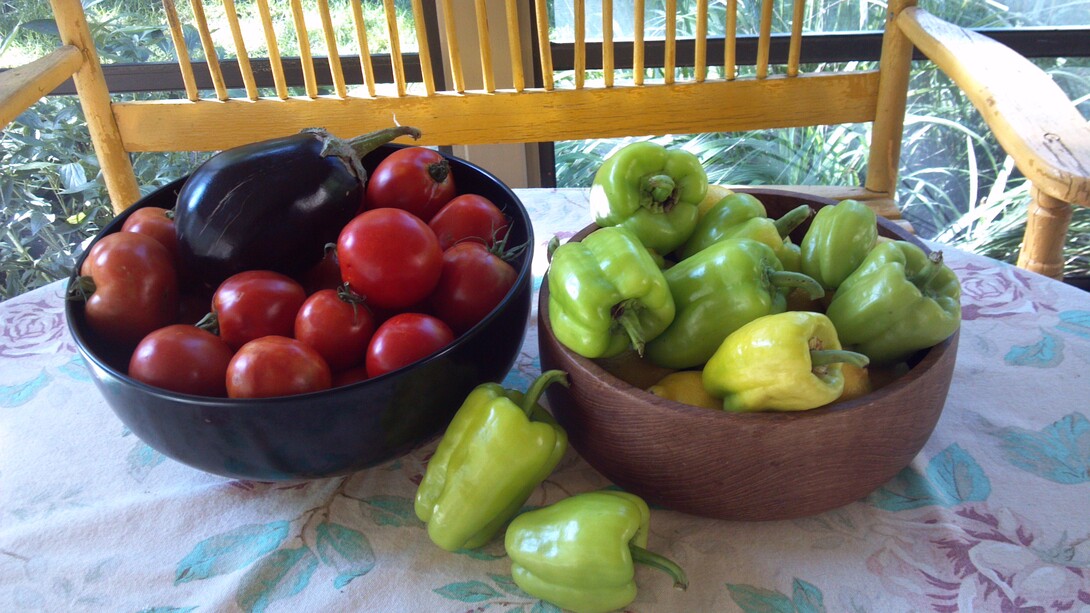
In The Garden — September 2014
Share That Bountiful Harvest
This is the time of year when virtually everyone encounters a generous gardener offering the surplus of his or her bumper crop of cucumbers, tomatoes, zucchini or other prolific garden or orchard plants. The abundance is of course a blessing, but the urge to get rid of it can be a curse.
Some gardeners (I'll raise my hand) sometimes get more enjoyment growing the crop than eating it. We sometimes simply don't consider how much we'll produce or how to possibly use it all. Other gardeners plan well, yet there are years when the stars align and production far exceeds expectations. In the case of fruit trees, they continue to produce even when the owner has lost interest or moved on.
Of course there are many options for preserving the excess, including freezing, canning and drying. But to the gardener who successfully grew that beautiful State Fair-worthy veggie, it seems a shame to reduce it to unrecognizable pulp or shriveled mass to be ignored on the shelf for months. This is a favorite excuse for those of us who lack the time or enthusiasm to preserve (again, hand raised).
Yet gardeners hate to see the fruits of their labor go unappreciated and meet an inglorious end rotting in the compost pile. So instead they (we) load the surplus in salvaged grocery bags or boxes and beg friends, neighbors, co-workers and yes, sometimes even strangers to "please take some, enjoy." We're not above going door to door. Plus it's a great way to get to know neighbors and co-workers, while also presenting an opportunity to brag about gardening expertise (real or imagined).
This random, sometimes frantic distribution system does move some of the excess. Unfortunately a significant portion still goes unused, part of the estimated 100 billion pounds of food thrown away each year in the United States. After seeing all that's gone through our office already this year, my bet is that estimate is low.
The good news is better options are available. A top choice to consider is donating to organizations that accept and distribute this abundance to people who can use it. The growing interest in this effort is displayed by the success of national organizations, including AmpleHarvest, a group that helps promote a network of nearly 7,000 food pantries across the United States. Local groups accepting excess produce include the Food Bank of Lincoln and Foodnet, along with other food pantries and churches. Be sure and check for details before loading up your vehicle.
Another option is to organize a neighborhood network, working through a neighborhood association, nearby church or civic group. The produce can be exchanged within the group, or gathered and taken to a food pantry as mentioned above. A simple system can be set up to announce what's available and where. A Facebook page or email list can be a great help.
A neighborhood network like this also works well for sharing excess garden seeds and plants, divided perennials, and even tools. It's a great way to reduce waste, and maybe more importantly, connect with others and build community.
Kendall WeyersSustainable Landscapes Specialist
Nebraska Statewide Arboretum
402-472-6693
kweyers2@unl.eduKarma Larsen
Communications Associate
NSA
402-472-7923
klarsen1@unl.eduDan Moser
IANR News Service
402-472-3030
dmoser3@unl.edu
Click here for larger image







